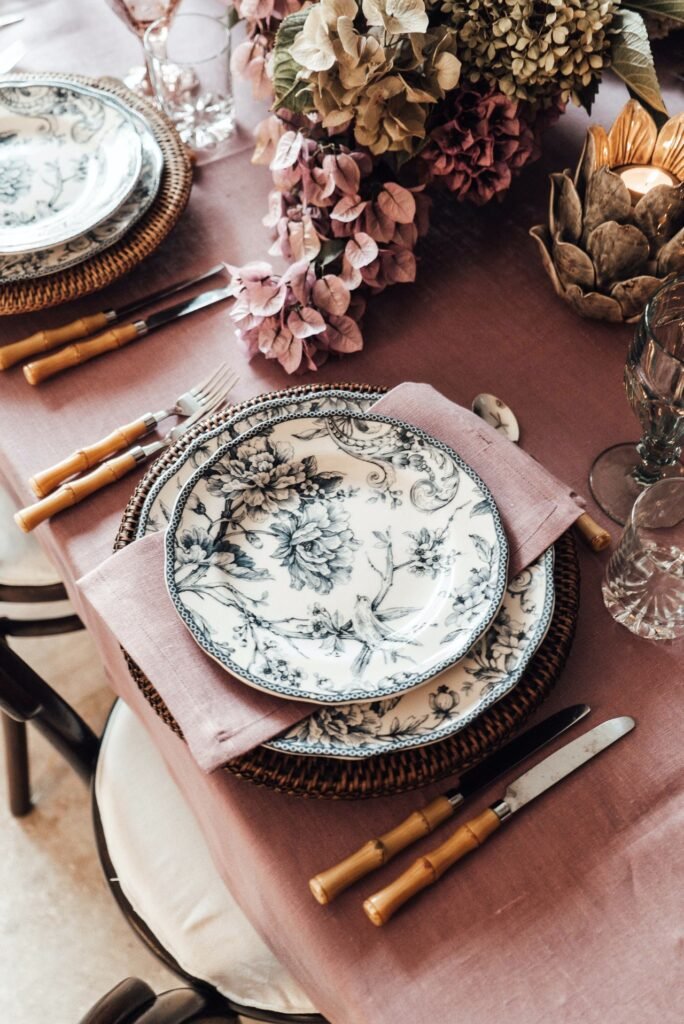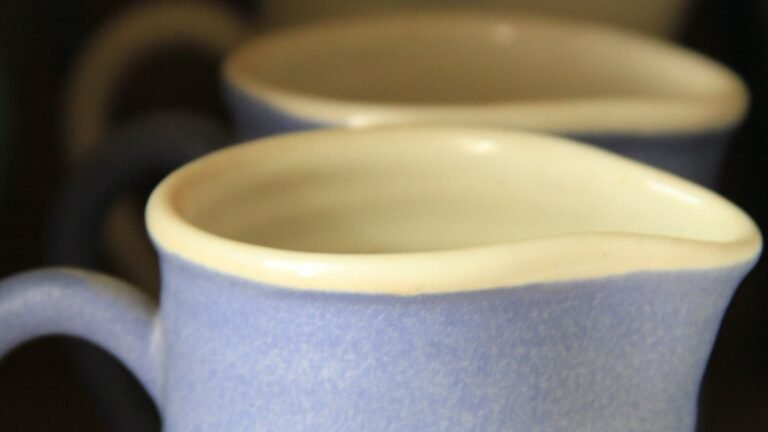What is the difference between ceramics and porcelain? (Complete guide)
Humans have been using clay for various purposes for centuries already, and the practice has made its way to modern days. Ceramics and porcelain are two materials that are made into objects we can find around us—tiles, dinnerware, appliances, art, and even automobiles and airplanes. However, ceramics and porcelain are not the same, so what is the difference between the two?
The main differences between porcelain and ceramics would be their density, physical properties, and purpose. Porcelain is thinner, denser, and with a smoother finish, while ceramics would be thicker, less dense, and with various textures. Whether for drinkware such as mugs or homeware such as tiles, porcelain’s more delicate properties make it more expensive than ceramics.
Ceramics and porcelain are both made through the process of mixing clay, shaping it into the desired form, and heating it inside a kiln or a heating device that solidifies the material. Ceramists, potters, or artists then glaze the product, a process of covering or coating for enhancement purposes, as a final touch. As simple as it sounds, ceramics and porcelain differ in terms of the materials used to make it, function, visual characteristics, and more.
Want to dive into the difference between porcelain and ceramic? This quick and complete guide will give you all the information you need to know!
How Can You Tell The Difference Between Porcelain And Ceramic?
You can initially identify porcelain from ceramic by observing some of its physical properties. In general, objects made of porcelain are finer in texture and would have a smoother finish while ceramics can vary in texture and finish. Although porcelain drinkware is denser, they tend to have thinner walls, compared to ceramics with thicker walls.
You may not be able to tell immediately, but the slight difference in their permeability is one of their main differences. This factor is important particularly in choosing between using porcelain or ceramic tiles. Porcelain tiles absorb lower moisture (below 0.5%) given their denser composition compared to ceramic tiles. Given this, porcelain tiles are often used in bathrooms or shower rooms and ceramic tiles are commonly used in indoor home floorings.
Style-wise, porcelain tiles come in simpler designs and ceramic tiles offer more variety. The style difference is also applicable in decorative objects and dinnerware. Individuals who prefer a more refined visual appeal such as fancy or dainty objects would opt for porcelain. Whereas, individuals with a more adventurous and casual taste in style choose ceramics as they come in more raw and rugged designs such as stoneware or earthenware.

These differences are not coincidental, as both porcelain and ceramic undergo the same process but are made with a slight difference in the combination of materials. Ceramic is made using red, brown, or white clay, while porcelain is the result of mixing clay, quartz, and feldspar. The manufacturing process differs too as porcelain objects are formed through methods such as molding or casting, and ceramics such as pots are made through pottery processes such as clay throwing and shaping.
Which Is Better: Porcelain or Ceramic?
The pros and cons of both porcelain and ceramic mainly depend on the purpose of the object and your personal tastes. There are pros and cons to choosing from the two materials, but there is no right or wrong answer, so you may ask yourself: what’s the object’s function and what personal preferences should I consider?
When choosing drinkware or dinnerware, you may want to choose porcelain for a fancier approach. Its delicate features are why some branded dinnerware is made of it. Its classic style also makes them perfect for gifting on special occasions. On the other hand, choose ceramic for items that you use on a daily basis as it is more durable. It definitely has more character to it and offers more flexibility when it comes to usage and design.
For tiles and walls, do note that porcelain tiles can be more brittle, but they can stand moisture more than ceramic. Ceramic ones are softer and more durable, but may also crack in colder situations. Again, function and purpose is an important thing you should consider when choosing between porcelain and ceramic.
Is there really any difference between porcelain mugs and other ceramic mugs?
Regardless of whether it’s porcelain or ceramic, it really won’t have any significant effect on your drink. Say you’re an avid coffee drinker or a tea enthusiast, both porcelain and ceramic are good options depending on the situation. However, we can say that porcelain and ceramic mugs would vary in use as well.
Porcelain is more dainty and small in nature. The most common ones that you see in the market are actually teacups and are smaller than mugs. This is why ceramic mugs are used more for coffee since it has a larger capacity. Personally, my everyday go-to mugs would be ceramic and I would only use porcelain cups on special occasions.
Porcelain vs. Fine China
The closest comparison to porcelain when it comes to mugs and cups would be fine china. Fine china is also made of almost the same properties as porcelain, but is more expensive and are less common. Fine china is heated at a lower temperature (2,200 degrees Fahrenheit) than porcelain (2,650 degrees Fahrenheit), therefore fine china is even more exquisite than the already delicate porcelain.
To identify between porcelain and fine china, observe its colors and look at it against the light. If it has a more off-white color and if some light can pass through when looking at it against the light, it’s fine china. If it’s heavier and opaque, you would be able to tell that it’s porcelain. Most of the high-end and luxury flatware or drinkware is made of fine china as it takes more effort to make.
Here’s a fun experiment: try exploring your own cupboard and check if you have porcelain, fine china, and ceramic mugs. Again, it may not be that easy to tell on the get-go, but based on what you have learned so far, try to distinguish one material from the other. This will not just help you get a first-hand experience of how they are different, but it will also allow you to sort the items according to the purpose they can best serve.
Care Guide
You can clean your ceramic mugs through a dishwasher since they aren’t as fragile as porcelain, whereas porcelain ones should only be hand-washed. Some people would also store porcelain cups or mugs in special cabinets, and would also keep them on display to preserve them or to serve as home decor.
Is porcelain more expensive than ceramic?
Based on the differences in their characteristics, composition, and function, porcelain can cost more than ceramics. Dinnerware and flatware prices will depend on the brand, but generally, porcelain tiles can be priced at around $47 per square meter, while you can get ceramic tiles for only $32 per square meter. You should definitely consider this when building a home so you can lean on the more cost-efficient house plan.
Some people are not very particular with it, but using both for their own purposes can make everyday actions like drinking your favorite beverages, more meaningful and enjoyable. You can save more money by knowing the difference between porcelain and ceramic, and using them according to their characteristics is a smart choice that can extend the material’s lifespan. More expensive porcelain would give you your money’s worth when used right, which also applies to using more economical ceramics for its actual use.
There you have it! A quick guide to tell the difference between porcelain and ceramic. Take note that the choice will depend on the usage, function, style of the object, and even your preference—may it be for drinkware, home construction, decoration, and even for gifting.







